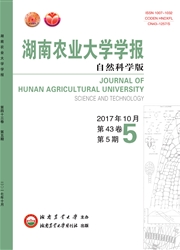

 中文摘要:
中文摘要:
通过同源克隆,结合RACE技术,从黄鳝肝脏cDNA中分离得到了MHC 1α因的全长cDNA序列。结果表明:黄鳝MHC 1α因cDNA全长1731bp,5'UTR长78bp,3'UTR长600bp,编码1条350个氨基酸的多肽;与其他鱼类不同,黄鳝血基因只具有4个外显子和3个内含子。二级结构分析结果表明,该基因具有MHC尼基因的典型特征和保守区域。实时荧光定量PCR检测结果表明:黄鳝MHC 1α因在不同组织中表达量的差别较大;嗜水气单胞菌(Aeromonas hydrophilia)感染可显著影响黄鳝肝脏、肾脏和脾脏MHC 1α因的表达。对42个个体MHC 1α因外显子3序列的测定结果表明,42个个体共分离到50个等位基因,每个个体包含1~6个等位基因,推测黄鳝具有至少3个血基因座位;等位基因PBR位点和非PBR位点的氐值均显著大于ds(P〈0.05),提示黄鳝胁基因曾经历过强烈的正选择作用。
 英文摘要:
英文摘要:
The cloning process of full-length cDNA of MHC class 1α gene from swamp eel (Monopterus albus) was reported in the paper. The full length of cDNA, encoded with 350 amino acids, was 1 731 bp, including a 5 untranslated region (UTR) with 78 bp-long, and 3' UTR with a 600 bp-long. The genomic sequence was identified to be different from that of in other teleosts, which contained of four exons and three introns, Real-time quantitative PCR demonstrated that the MHC class Ia gene ubiquitously expressed in ten healthy tissues. Great changes in liver, spleen and kidney were observed after they infected by Aeromonas hydrophilia, a pathogenic bacteria. Fifty distinct alleles were isolated from forty-two individuals, and each of them had one to six alleles. The presence of six alleles in one individual suggested that there were at least three MHC la loci in the genome. Both at the protein-binding region (PBR) and at the non-PBR region, dN were significantly greater than ds (P〈0.05), which implied that the gene undergone a strong positive selection in swamp eel sequences.
 同期刊论文项目
同期刊论文项目
 同项目期刊论文
同项目期刊论文
 期刊信息
期刊信息
